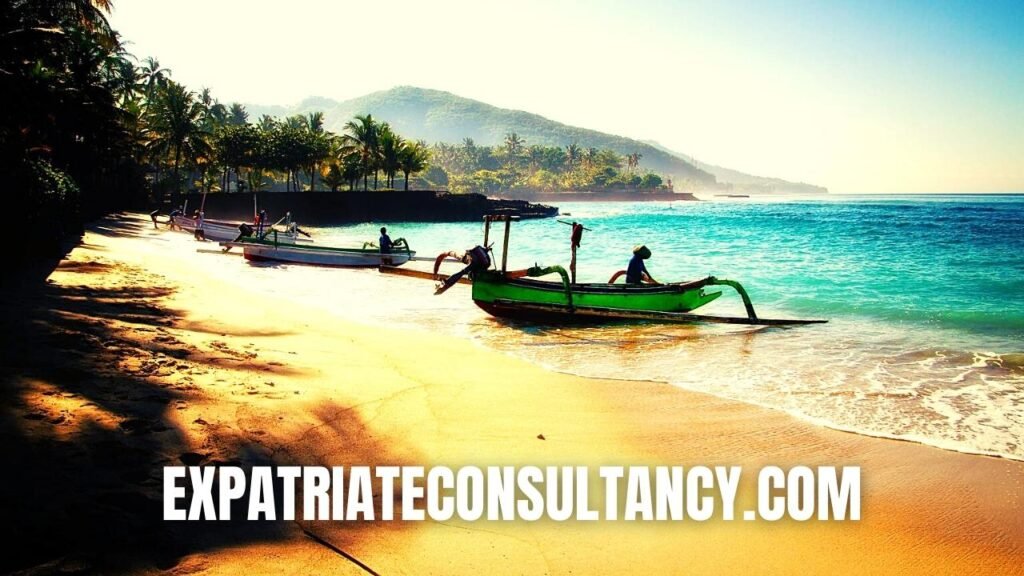What if I told you that you can have a high quality of life, in some of the most beautiful places in the world, while paying up to 72% less in terms of cost of living?
Sounds absurd?
Well, it is not – it is actually very, very real, and I saw it myself!
But here is a question for you:
On a scale of 0 to 10, how much would you like to have all that and also pay LOWER income taxes?
If your answer is anything above 5, keep reading.
But a disclaimer: if you love big cities, this article is not for you – for all these benefits, you must forget the hustle of the metropolis
- Traffic
- Crime
- Expensive rent
You don’t need that! Nobody does – at least nobody who is going for retirement, because big cities are to work, not enjoy life at a low cost.
Today, I’ll share the names of 15 cities where you can find kind neighbors, quiet mornings, and prices so small that you will check again, because it looks like they left off a zero
But these places promise more than just cheaper living—they allow a lifestyle that makes you live longer, and healthier, a life you’ll love.
We start with…
Bagnols-sur-Cèze, in France
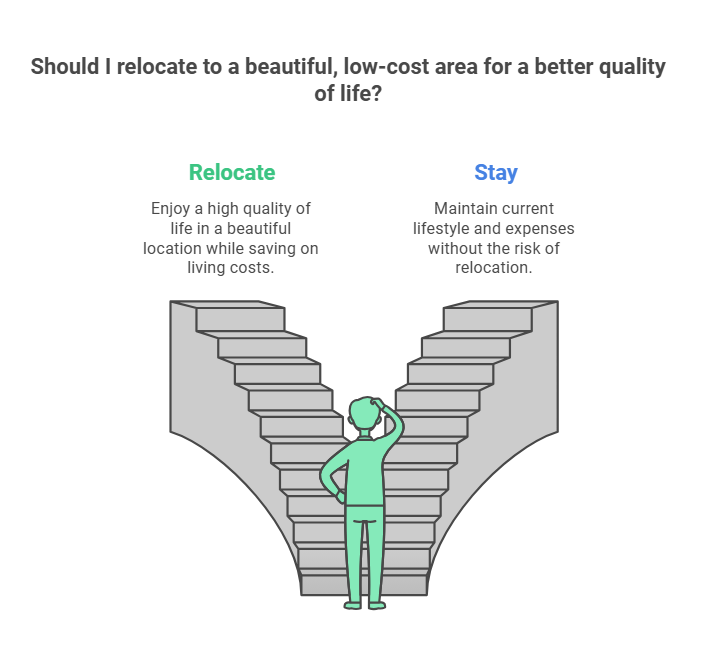
This is a small town in southern France with around 19,000 residents, surrounded by vineyards that maintain its winemaking traditions.
As you probably know from one of the previous articles about retirement in France, there are two great advantages of this country:
- The first is the fact that Americans have a special tax agreement that is extremely beneficial with France, exempting them from income taxes in many cases.
- The second is that, despite recent criticisms, the French healthcare system is still among the best in Europe.
In Bagnols-sur-Cèze, despite its small size, public healthcare is available at the Centre Hospitalier de Bagnols-sur-Cèze, but even if you need some other treatment, you are just 35 minutes away from Avignon, a larger city with bigger hospitals and clinics.
Additionally, less than one hour and a half fare other two large French cities: Montpellier and Marseille.
As you also may know from some of our previous articles, lately France has had some issues with violence, especially in large cities like Paris and Marseille, but this is not the case in Bagnols-sur-Cèze, it is a very safe town.
In the entire year 2023, for example, this French town had just 10 robberies, and all of them were without the use of a weapon. In bigger cities, a single street might witness more robberies than that – so there is no reason to worry about safety in Bagnols-sur-Cèze
The town is well-served by many buses and trains that connect it to Avignon, and from there you can travel to anywhere in France.
Despite being a bit more inland, Bagnols-sur-Cèze still has some of the wonderful Mediterranean climate – average temperatures range from 5 °C (41 °F) in January to 28 °C (82 °F) in July, and there are roughly 250 sunny days each year, and humidity averages 60%, making the climate generally pleasant for outdoor activities.
And now the best part:
Housing is very affordable in this French town, with apartments often rented for under 600 euros a month.
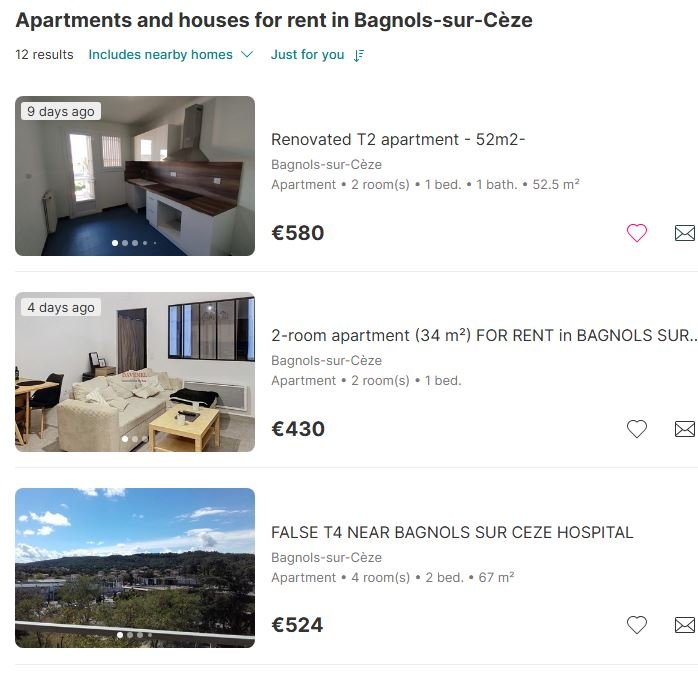
You can even find an apartment in the town’s central location for 430 euros – just 450 dollars – per month.
That is an amazing price to live in a city famous for its quietness, safety, and winemaking.
From France, we jump to Spain, because this list of the 15 best cities to retire in Europe is ordered alphabetically, not by ranking.
EXCEPT for the last 2 cities, which are treated separately due to their unique qualities, but to arrive at them, first, we need to talk about the next city on our list:
Dénia, a coastal town on Spain’s Costa Blanca with about 42,000 residents.
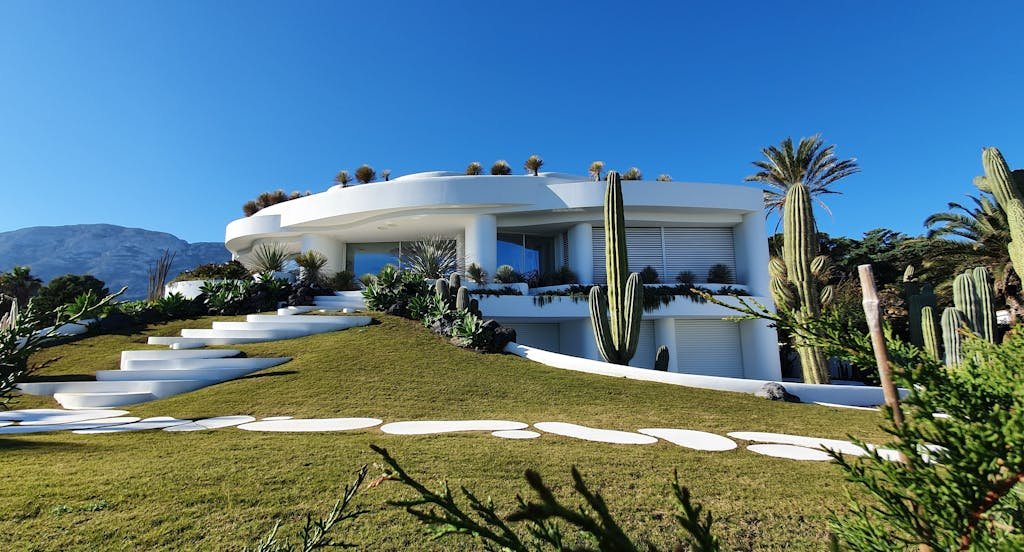
Costa Blanca is an area that enjoys plenty of sunshine, and its most famous city is probably Alicante.
Dénia specifically is renowned for its fresh seafood, particularly red prawns.
Despite its size, the city hosts one of the best private hospitals in the entire region: The HLA Hospital San Carlos – they have one of the best-reviewed cardiology departments in this part of Spain.
Talking about infrastructure, public transport is reliable – at least by Spanish standards, with buses and regional trains connecting Dénia to nearby cities like Benidorm and Alicante.
And by now, maybe you are thinking that Dénia is not a cheap city, since it is close to Benidorm and Alicante, two places that got expensive lately due to the high influx of British expats.
However, the living costs are still low in Dénia, and it is pretty common to find apartments or detached houses for 650 euros per month or less… Like this beautiful 2-bedroom flat with a sea view, and parking included.
Now, one disclaimer here, is that we are talking about the Costa Blanca, in Spain, and that means…
Summers can be busy with tourists, especially around the beaches.
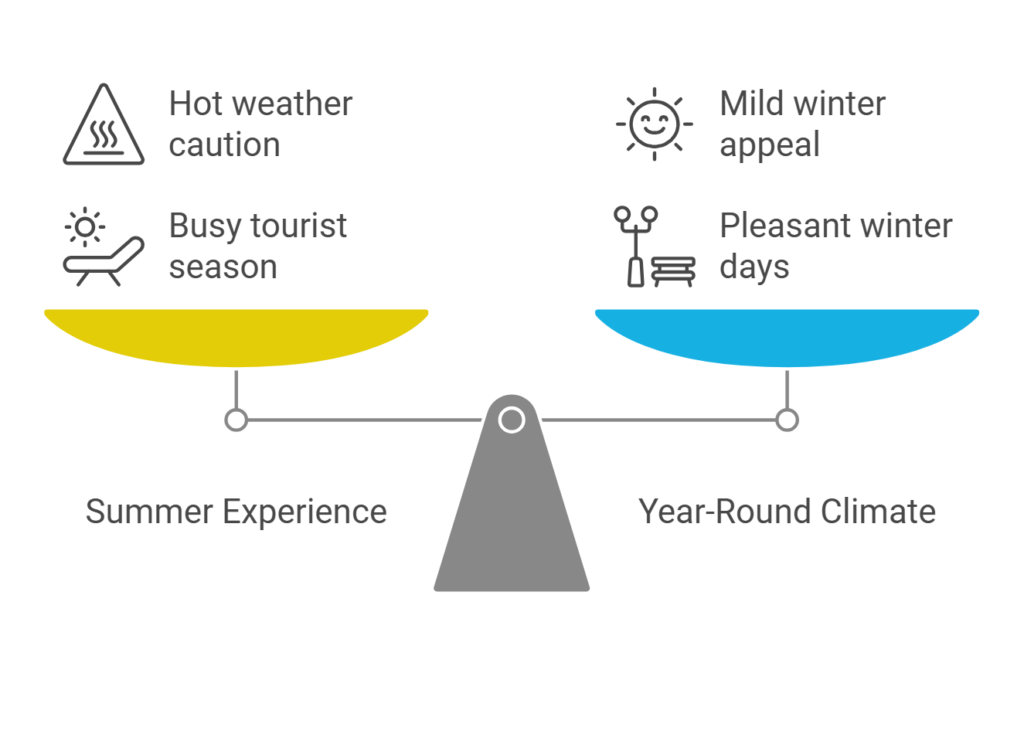
Some restaurants cater more to Brits, which might feel less genuine. Also, summers might be very hot, so be aware of that.
However, this is one of these places where there is never truly winter – even during January the temperature is pleasant during the day, and then you have no crowds of tourists and the city looks so peaceful.
And since we are talking about peaceful cities, the next one, despite being bigger than Denia, is more peaceful year-round (probably due to the absence of drunk British tourists).
It is Évora, in Portugal
(and by the way, if you have been to Évora, or to any city on this list, let me know what you think about them in the comment section)
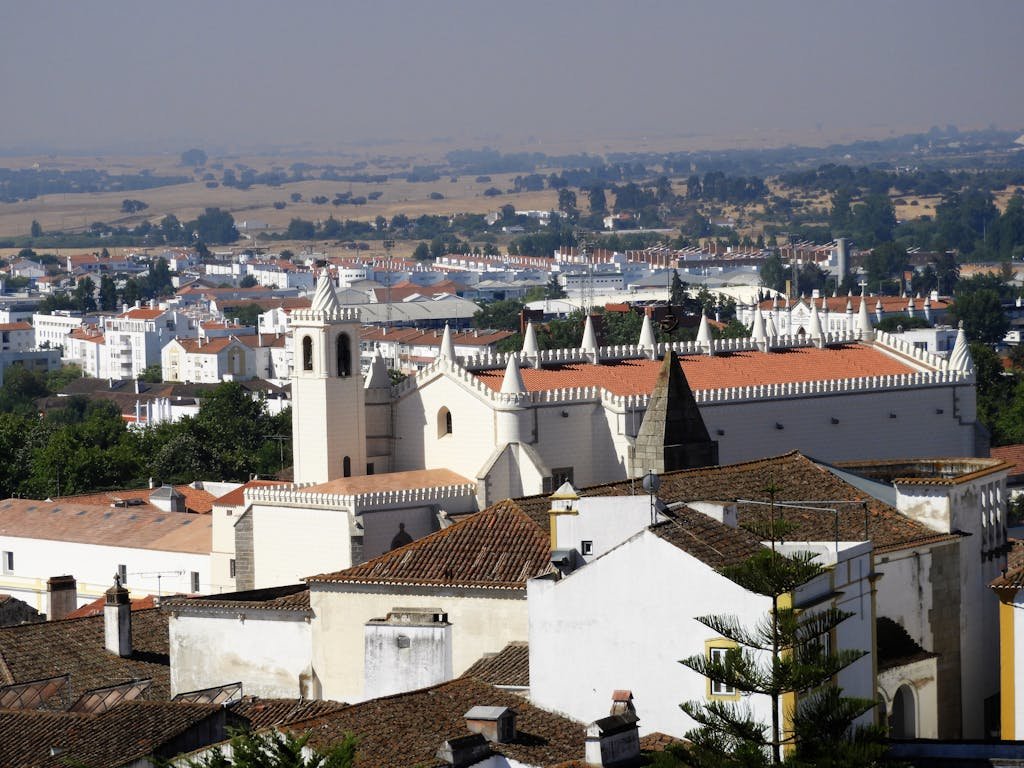
This is a historic city in the Portuguese countryside, with about 57,000 inhabitants.
Maybe you never heard about Évora, but this city is a UNESCO World Heritage Site, rich in culture and landmarks, including the Capela dos Ossos, a chapel decorated with human bones.
It is a very affordable city with monthly expenses typically below 1,600 euros – to live comfortably. In not many European cities this is possible nowadays.
In Evora, the options for renting are a bit limited, but if instead you want to buy a property, this city has plenty of good opportunities – like this lovely 112 sqm apartment, for less than 150,000 euros! In a building that looks like those from the city where I was born – and those buildings are made to last, believe me.

Public transportation makes traveling to Lisbon easy – multiple daily trains make the entire trip in just 1 hour and 20 minutes, and it costs less than 9 euros!
Summer temperatures in Évora can reach well above 30°C —it is known for some to be the hottest city in Portugal. (Although others might argue that this crown belongs to Beja). During winter, however, the city has mild weather, averaging 10°C (50°F). The region where Evora is located, called Alentejo, enjoys over 2,800 hours of sunshine annually, so it has a pleasant climate year-round.
And about safety, well, Portugal is one of the safest countries in Europe—the safest continent in the world—so there is nothing to worry about here.
In summary, Evora is one of the few cities that offers the calmness of the countryside but is close enough to a large city like Lisbon for a day trip if you get bored.
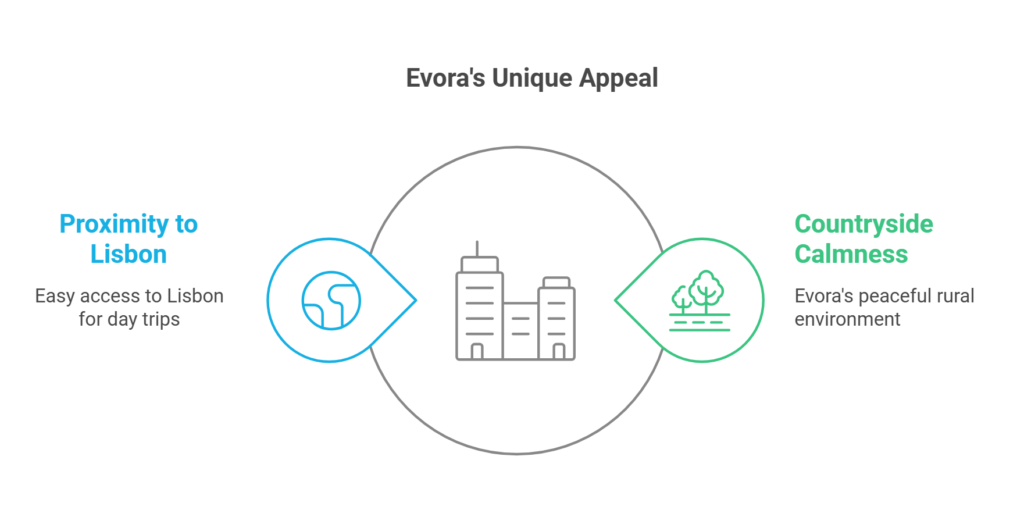
The next city is VERY different from Évora – it has a more complicated language than Portuguese, it is also quite windy, and is on the other side of Europe, yet, we have some very GOOD reasons to include this city in this list.
So I am talking about Koper, in Slovenia
It is a port city on the Adriatic coast with around 25,000 residents, which combines historical charm and a high quality of life.
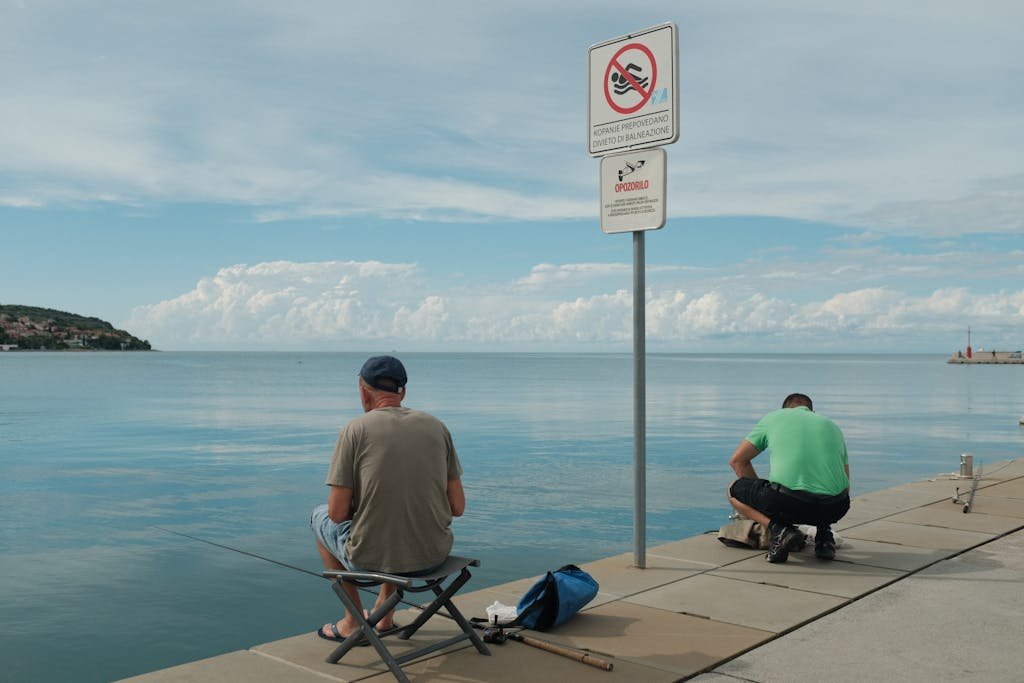
It is just at the border of Slovenia and Italy, so the closest big city to Koper is not in Slovenia, but in Italy: Trieste, which is less than a half-an-hour away.
Curiously, a local told us that many Italians cross the border and visit Koper to buy things like construction materials, or to fuel their cars, because it is cheaper!
In terms of healthcare, the needs of Koper’s residents are met by the General Hospital Izola, located just 6 kilometers from downtown, and known for its quality services and modern facilities.
Transportation in Koper is efficient, with bus and train connections to Ljubljana and Trieste.
Winters in Koper are cooler than typical Mediterranean climates, with average temperatures around 5°C (41°F), and Summers are mild, averaging 24°C (75°F), perfect for enjoying the coastal environment.

The problem is there is not much weather but the wind, because of the famous BORA
It is a Katabatic wind that descends from the Alps to the Adriatic coast with significant force, sometimes reaching hurricane speeds of over 200 km/h. The bora is characterized by its ability to rapidly lower temperatures, and it is well known for its sudden onset and ferocity
But if you are ok with that, Koper has also some very good characteristics – particularly if you love fine architecture, like me.
A notable feature of Koper is its Venetian Gothic architecture in the old town, reflecting its rich history under Venetian rule. This architectural style attracts history enthusiasts and those interested in unique buildings.
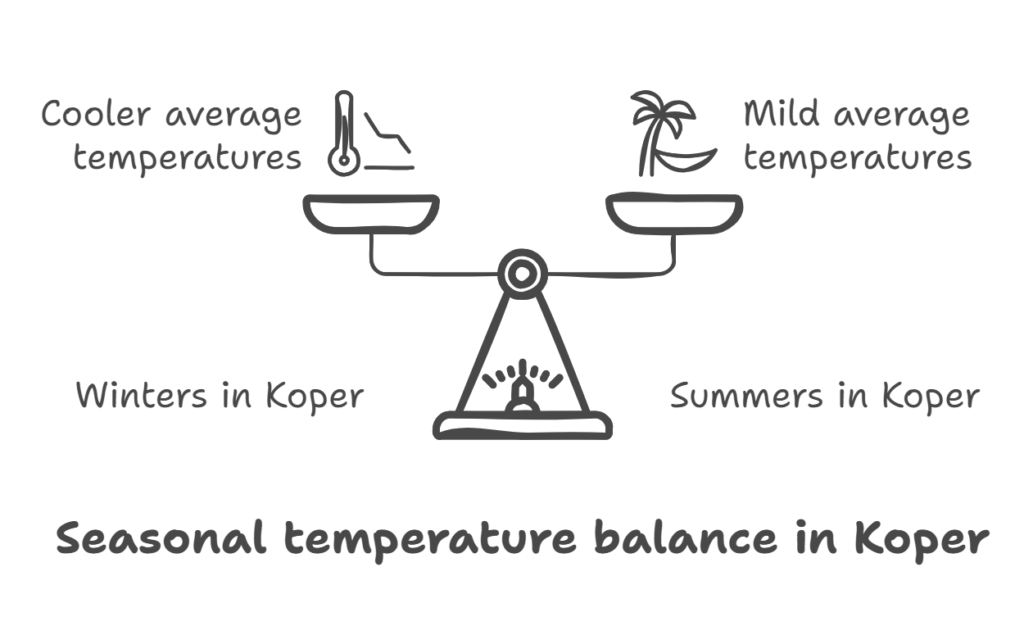
The cost of living is reasonable, especially considering that Koper is so close to the richest part of Italy – something that technically would push the prices up. You can find apartments for as low as 600 euros per month.
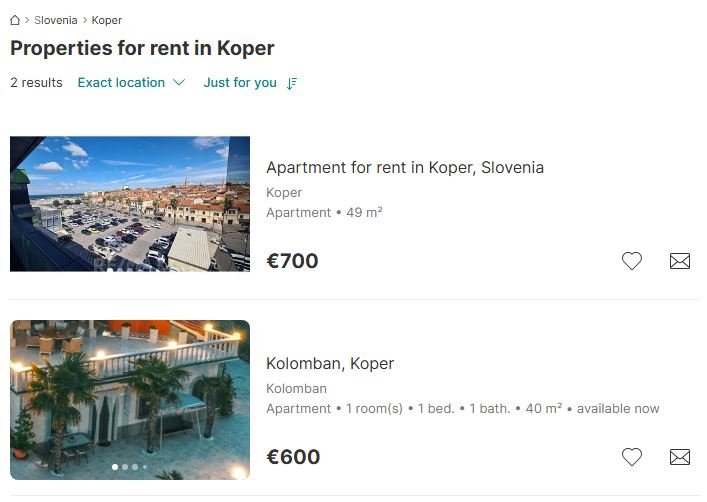
But the next city is even cheaper, and is located in a country that was already mentioned in this list.
Lagos, in Portugal
Located in the famous Algarve region, a region some residents complain that it no longer looks very Portuguese due to the tremendous influx of British – but maybe that is just banter, Lagos is a coastal town with about 31,000 residents that offers a lifestyle that combines natural beauty with modern conveniences.
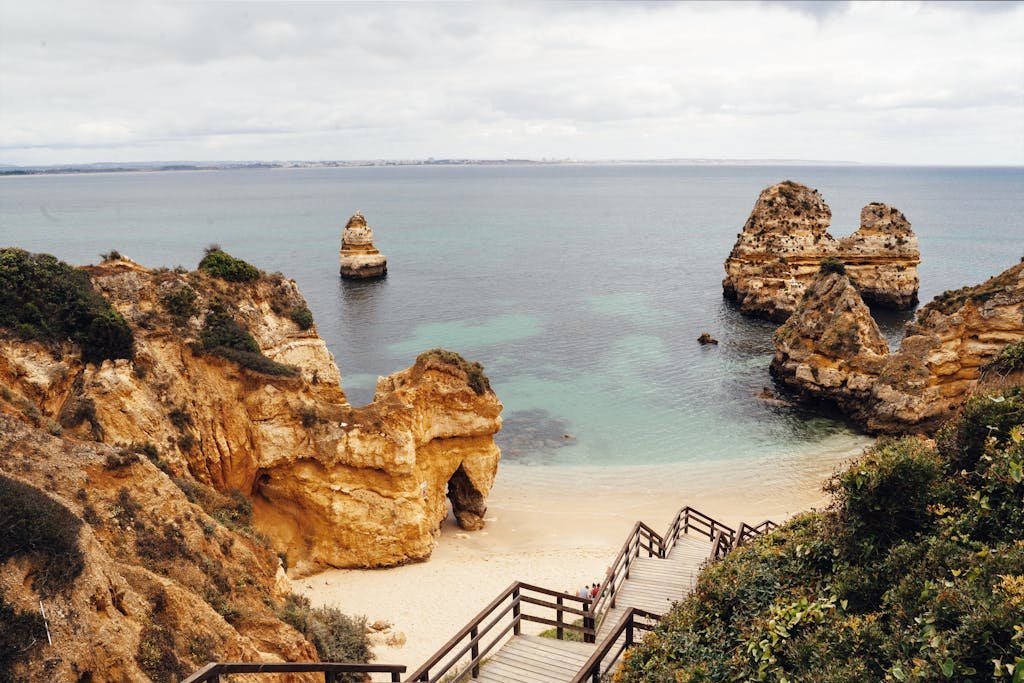
Beyond its natural beauty and essential amenities, Lagos provides several unique features that make it an attractive destination for those looking to retire in Europe.
First of all, it is a city with a considerable expat community, so many doctors, clinics, and other service providers can speak English.
Talking about healthcare, those requiring more advanced treatments, nearby hospitals in Portimão are easily accessible, just 30 minutes away.
The weather in Lagos is one of its most attractive features for retirees – summers are warm, with average temperatures ranging from 25°C to 30°C, and winters are mild, with temperatures averaging between 10°C and 16°C (50°F to 61°F) – snow is virtually nonexistent.
Portuguese people are lovely and very social—although during summer, you might not see many Portuguese around.
One of Lagos’s downsides is that during peak tourist season, it becomes quite busy, especially around its cobblestone streets.
And it is not the cheapest city in Portugal – in a few paragraphs you will discover a much cheaper one – yet, Lagos still has a good price for what it offers, and you can find good-located apartments for 750 euros or less, like this flat with a swimming pool access, available for just 670 euros per month.
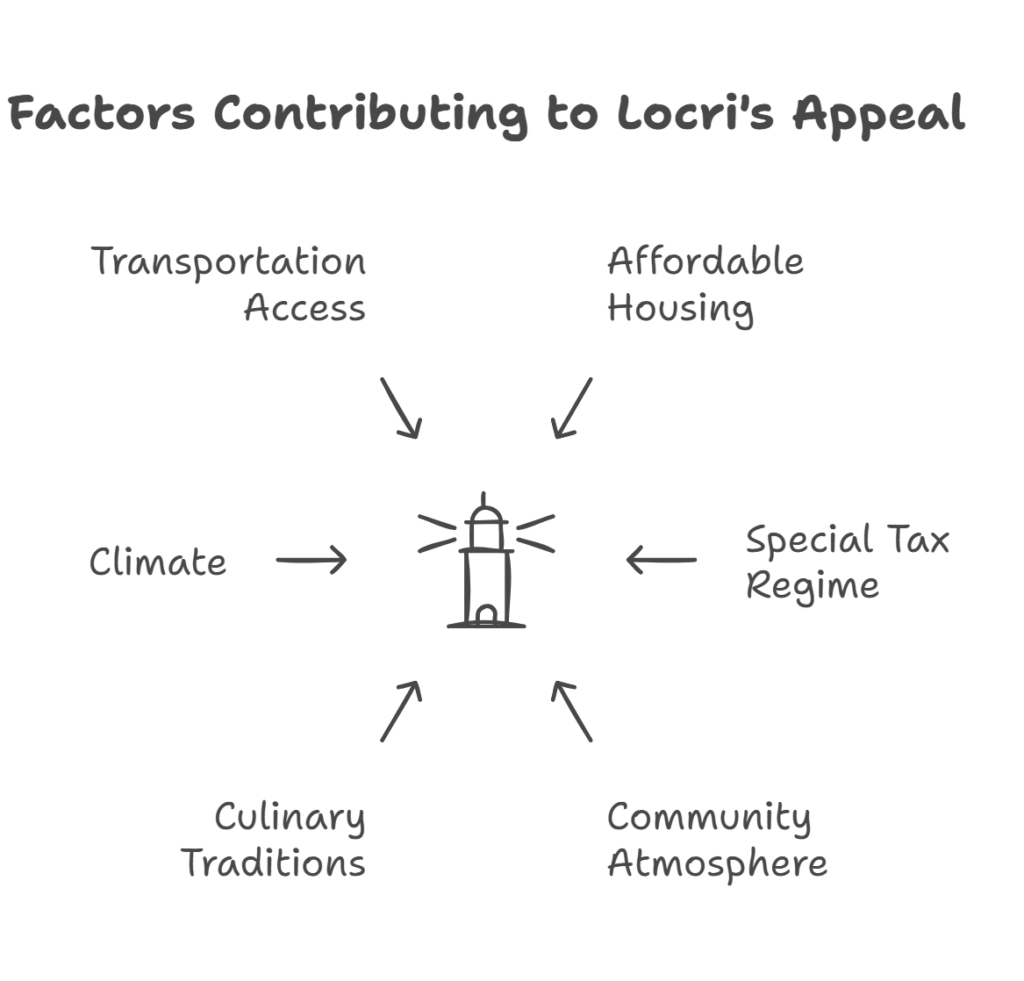
From Lagos, we jump to the next name in our top 15 – a city that also starts with L, but it is located in another country, and it is MUCH smaller.
Limoux

This is a small town in southern France with approximately 10,000 residents. It is ideal for those who prefer quiet countryside living, and a relaxed pace. A unique aspect of Limoux is its production of Blanquette de Limoux, the world’s oldest sparkling wine, which predates Champagne. Wine enthusiasts will appreciate the local varieties and the town’s long-standing tradition of winemaking.
The town has reliable healthcare through the Centre Hospitalier de Limoux-Quillan, which offers a wide range of medical services.
Transportation options include regional buses and trains that connect Limoux to Carcassonne and other nearby cities. The closest large city is Toulouse, just 100 kilometers away.
If you are scared about the increasing violence in France, that does not apply to Limoux – it is a very safe town, the polar opposite of Marseille or Saint-Denis.
Summers in Limoux are also pleasant, averaging 24°C (75°F), and winters are cool but not freezing, at around 6°C (43°F).
The cost of living is low: groceries, utilities, and dining out are reasonably priced. Local markets offer fresh produce at affordable rates, allowing residents to maintain a healthy and cost-effective diet.
The best thing about Limoux is how affordable is HOUSING there!
We are talking about a city where you can rent a 2-bedroom house for just 560 euros!
If you prefer to live in an apartment, you will find options below 400 euros!
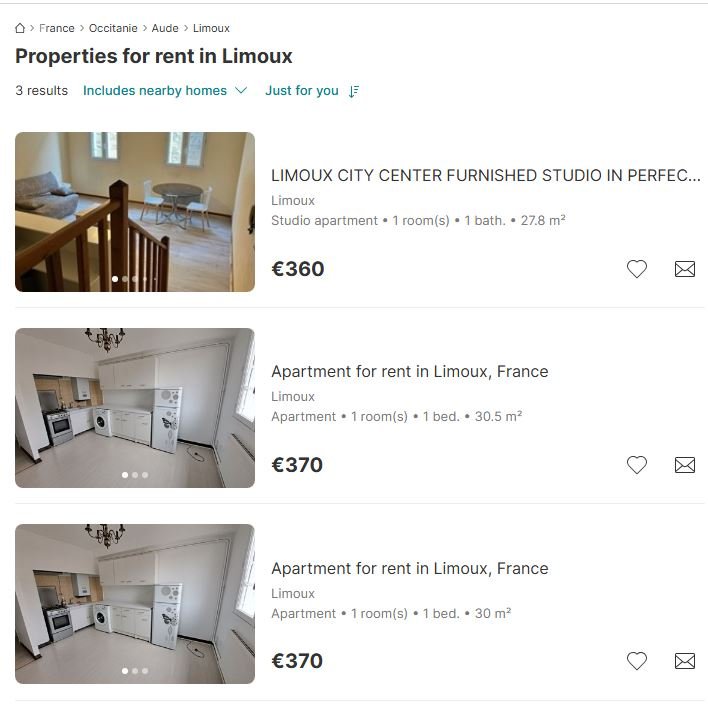
Even for countryside France this is considered a very good price.
The most important thing to have in mind, however, is that this is the type of town where, to socialize with the locals, you MUST, You ABSOLUTELY MUST… learn French
Yes, there are some people there who speak English, but they are a minority.
The good news is that learning French is NOT that difficult, and once you start to speak it, your life will be so much better. The difference in your daily interactions with the locals is mindblowing. The method I use to learn new languages is this one (by using this link you get a 40% discount after trying for free, and if you subscribe, you’ll get a 40% discount!)
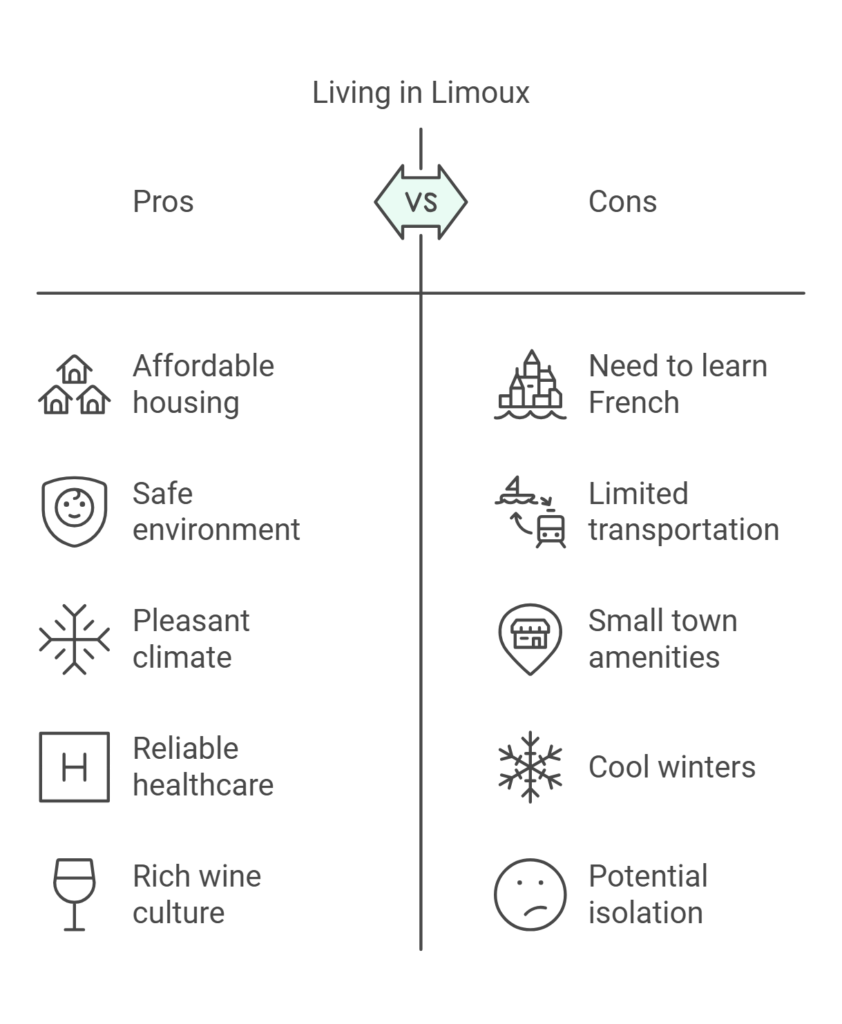
From Limoux, we jump to the next city, and you might be curious, because so far we haven’t mentioned ANY city in Italy –a country that, in previous articles, we put on pair with Greece as the best destination to retire in Europe.
The reason we didn’t mention any city in Italy is because, coincidentally, the 3 Italian towns on this list are all one after the other in alphabetic order.
And starting now, the first one is
Locri
Locri is a charming coastal town in Calabria, Italy, with a population of around 12,000. Situated along the Ionian Sea, it offers a peaceful environment rich in history and natural surroundings. The Ospedale di Locri provides healthcare services, catering to the medical needs of the community.
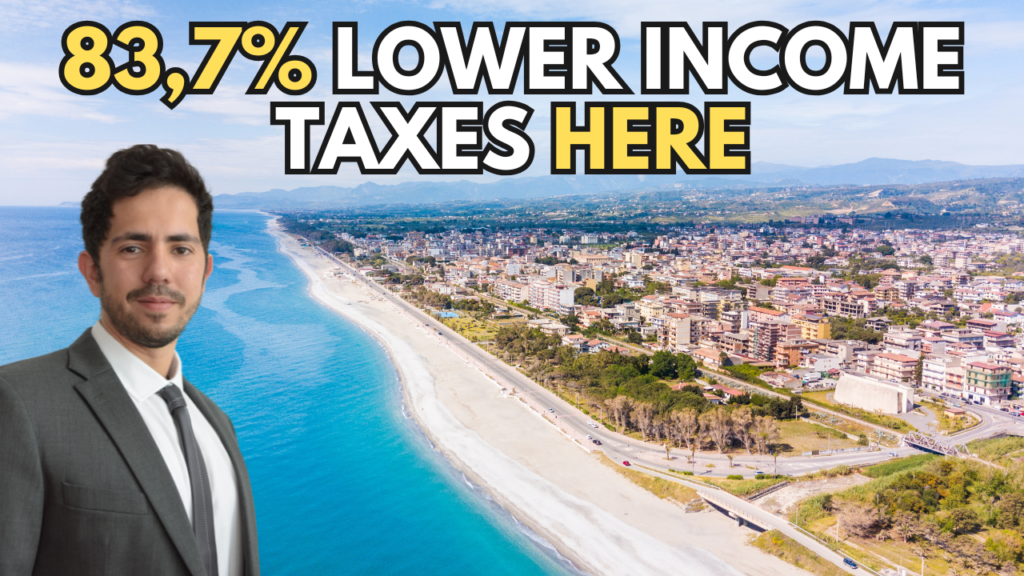
Transportation in Locri is straightforward: The town is easily reachable from major cities via the A2 autoroute and close to Lamezia Terme and Reggio Calabria airports. Ferries to Sicily are also accessible from nearby ports.
The town has a friendly community atmosphere typical of southern Italy, with numerous local festivals, markets, and healthy culinary traditions
It is the kind of place in southern Italy that moves at a relaxed pace, which means fewer job opportunities, but also a quieter atmosphere, especially during the off-season.
The summers are warm, averaging 27°C (81°F) – but remember, this is an average, and on certain days, it might go well above 30, perfect for enjoying the beaches and Lidos. Winters are mild, around 11°C (52°F), allowing for comfortable outdoor activities.
A highlight of Locri is its proximity to Locri Epizefiri, an ancient city with Greek-era archaeological sites. These ruins showcase the area’s long-standing heritage and provide a fascinating glimpse into the past.
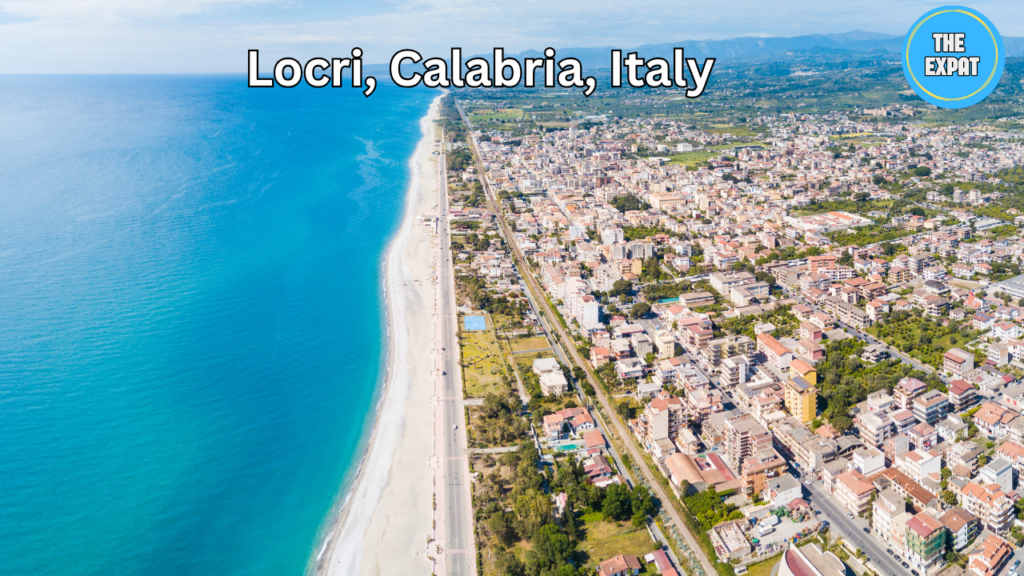
Remember that Locri is a small Italian town, therefore there IS a language barrier, and anyone considering moving there should learn Italian – for that, check the link I left in the description.
One of Locri’s main attractions is its affordability. Housing options are budget-friendly, with many apartments and houses available at reasonable prices. Monthly rent for a comfortable apartment typically stays well below 500 euros.
Options range from modern apartments in the town center to traditional stone houses in quieter neighborhoods. Many homes come with balconies or small gardens, providing pleasant outdoor spaces to enjoy the mild climate and scenic views.
I found this enchanting detached house for just 350 euros, in a central area of Locri, and it has a cute little garden.
Other expenses expenses, such as groceries and utilities, are also lower compared to larger Italian cities.
Locri is known for its delicious cuisine which features fresh seafood, handmade pasta dishes like maccarruni, and local wines such as Bivongi and Grecanico – in fact, in these towns, one thing that is not expensive is to eat well, and to eat healthy.
But, wait!
There is another HUGE benefit of Locri:
The very attractive Special Tax Regime for New Residents in Southern Italy.

The Italian government has implemented a unique tax incentive to attract individuals with income from abroad to live in cities with less than 20,000 residents in Southern Italy.
Under this scheme, qualifying residents only pay a 7% income tax on their foreign-earned income.
To take advantage of this opportunity, applicants must meet specific criteria, such as proving their foreign income sources and committing to reside in Locri for a minimum period.
Locri’s special tax scheme offers a compelling reason to make this charming town your new home.
And that is also the case for the next town on our list – and remember, Let me know in the comments which city intrigues you the most!
Policoro
Policoro is a town in the Basilicata region of southern Italy. It has a population of about 17,000. It has medieval roots and developed significantly after land reclamation efforts in the mid-20th century, leading to increased population and municipal autonomy.
Policoro has a Mediterranean climate with mild winters and hot, dry summers. Temperatures in July can reach around 37°C during the day (98.6°F), sometimes even more, with manageable humidity thanks to sea breezes.
Winters are mild, around 9°C (48°F), allowing for year-round outdoor activities, like visiting the Parco Nazionale del Pollino
Policoro is quieter compared to larger coastal cities, and offers a peaceful environment for those who prefer a low-key lifestyle.
But the area is still rich in cultural festivals and traditions, providing a nice community atmosphere
The biggest downside is that it is a bit far from other major urban centers, and the closest major city is Bari, distant 2 hours away by train.
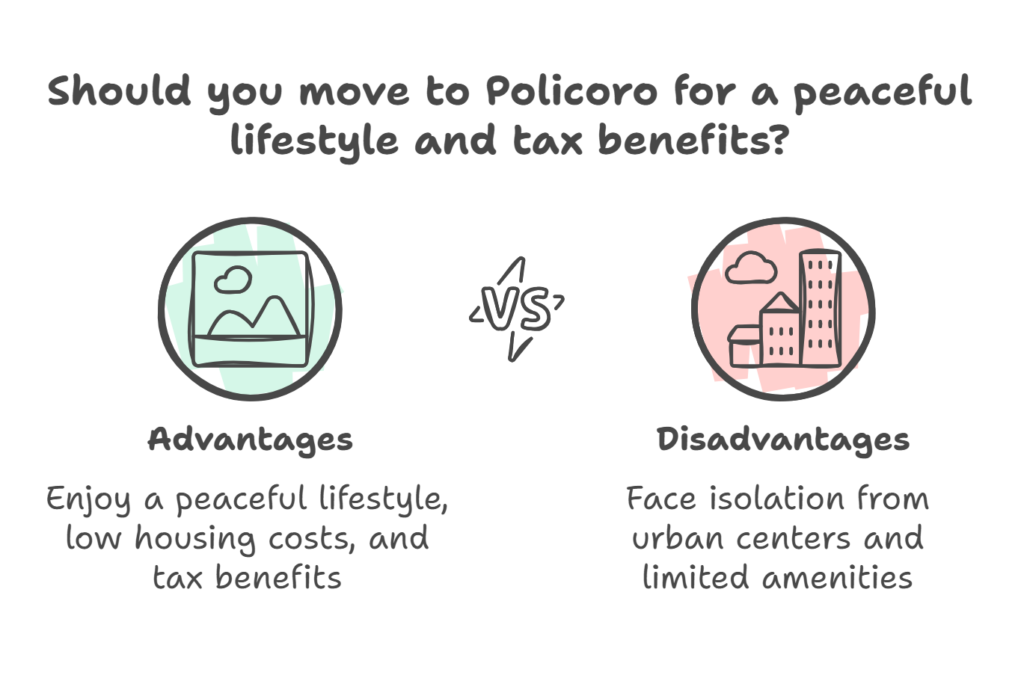
The cost of living is very affordable, and local markets provide fresh seafood and produce at affordable prices, making it easier to live within a budget.
Despite being a beautiful beach town, with splendid scenery, the cost of housing in Policoro is surprisingly low,
You can rent a penthouse for just 450 euros per month, and it has a nice and spacious terrace.
If these good prices for housing are not enough keep in mind that Polidoro has just 17,000 residents, so it is below the magic number of 20,000. That means if you decide to live there, you can benefit from the Special Tax Regime for New Residents in Small Cities and Towns in Southern Italy. And pay just a 7% flat income tax rate – one of the lowest tax rates in entire Europe!
Given such benefits, it is not surprising that the next city on our list is also in Italy…

Sapri
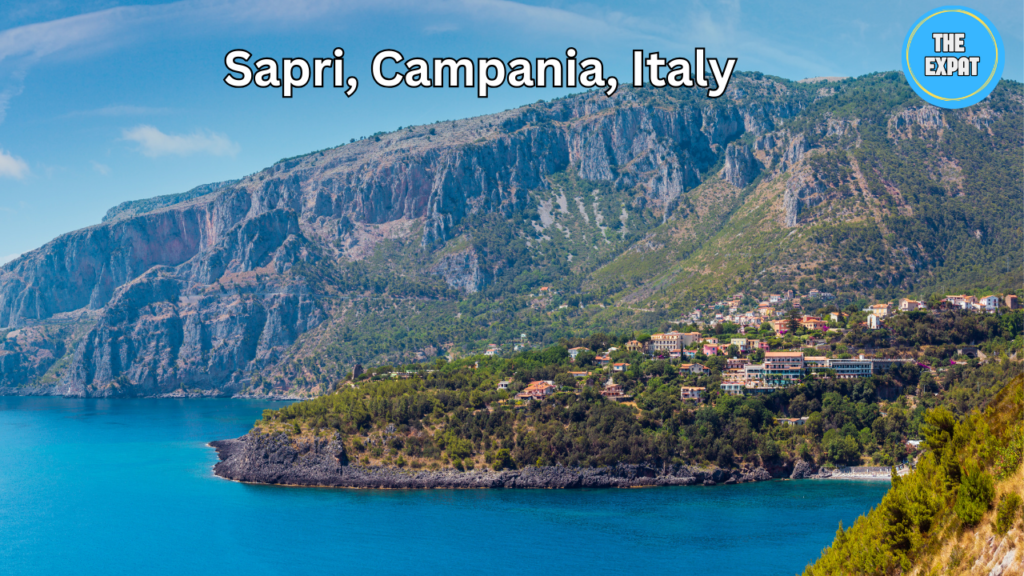
This is a small seaside town in the province of Salerno, in the Campania region of southern Italy. Its beaches face the Tyrrhenian Sea, and it has around 6,500 residents.
The town is situated on this beautiful gulf, known for its clear waters and sandy beaches, which have received the Blue Flag award for environmental quality since 1995.
The town features a scenic lungomare (seafront promenade) which features the statue of the “Spigolatrice di Sapri”, inspired by a 19th-century poem
The lungomare is also lined with bars and restaurants, perfect for leisurely walks and to enjoy local cuisine
Healthcare is accessible at the Ospedale dell’Immacolata di Sapri, which is a surprisingly large hospital for such a small town. They have particularly good reviews of their emergency services – congratulations to the nurses and doctors of their ER!
One downside of Sapri is that, of all the towns and cities we have listed so far, probably it is one of the most isolated.
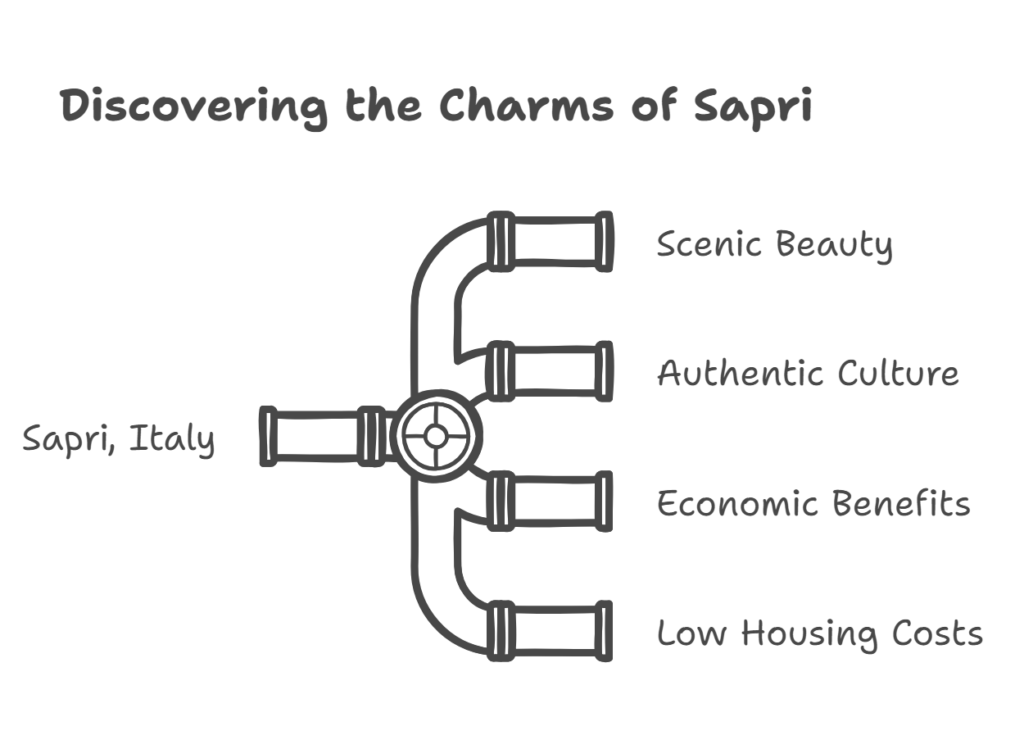
The closest large city is Naples, which is 200 kilometers away, but fortunately, multiple daily trains connect Sapri to Naples in less than 2 hours.
This distance from major cities, however, also brings a positive aspect: Differently from many Italian coastal cities, Sapri is not saturated by tourism during the high season.
There are some visitors, of course – it is a beautiful town, but it is not crowded like Positano or Amalfi, and this has multiple benefits:
First, Sapri is very authentic, including its food. The Campanian cuisine is present there, and numerous trattorias serve fresh seafood and regional dishes. During local festivals, traditional dishes are highlighted, and local markets offer fresh, inexpensive produce, helping residents maintain a budget-friendly lifestyle.
Another benefit is that housing costs are low, surprisingly low for a coastal city in the Campania.
There are not many options for rent, since it is a small town, but if you want to buy a place there, you can purchase a 2-room flat in the via Michelangelo Buonarroti, in the heart of the city, with splendid views, and beaches within easy ready… for just 130,000 euros.
The town’s peaceful atmosphere may feel too quiet for some, especially outside the busy summer months when cultural events slow down.
Due to its small size, Sapri also qualifies for the Special Tax Regime, where new residents might pay just a 7% flat income tax rate instead of normal (and higher) taxes – a beautiful incentive for whoever is thinking of retirement in Italy.
But remember: since Sapri is a very authentic Italian coastal town, its inhabitants are very authentic, so learn some Italian to be able to socialize with them.
Leaving Italy for now, and going back to Portugal, the next city is
Tavira
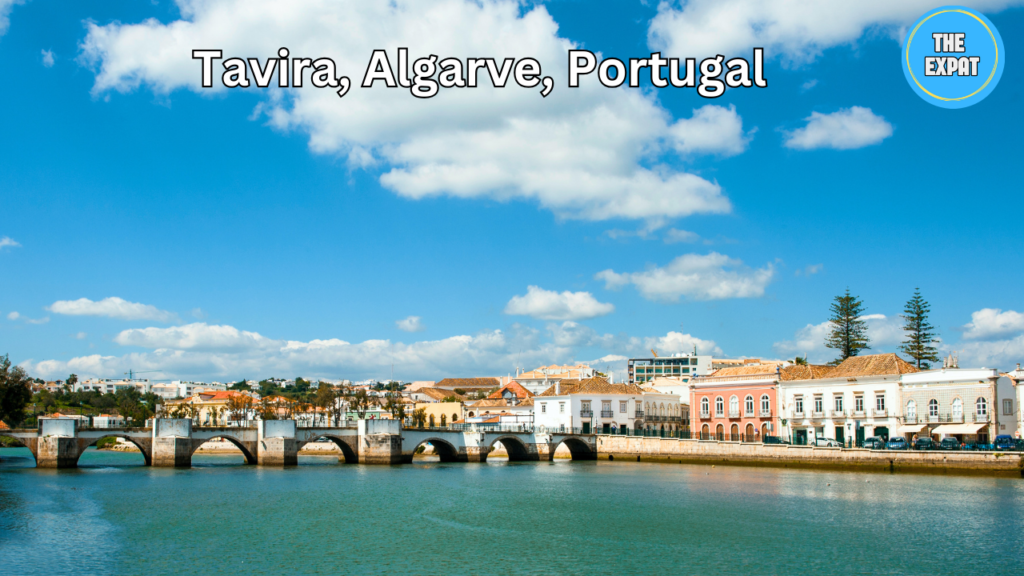
It is a town in Portugal’s Algarve region with around 26,000 residents, and it is increasingly becoming a sought-after destination for foreigners considering retirement abroad.
Tavira has a Mediterranean climate with approximately 300 days of sunshine annually, making it ideal for outdoor activities and a relaxed lifestyle. Nearby attractions include the Ria Formosa Natural Park and stunning beaches like Praia de Tavira.
One of the most remarkable things about Tavira is that one-fourth of its population consists of expatriates, and this community fosters a welcoming atmosphere, making it easier for newcomers to adapt.
Another positive aspect is that it is very well connected, since it is just 30 minutes from the Faro Airport, where you can take a flight to multiple capitals in Europe
Ryanair flies to this airport by the way, so when cheap flights are very much available.
Don’t let Tavira’s small size fool you—despite having less than 30,000 residents, it is a very lively town with markets and festivals that enhance community life. The Mercado Municipal de Tavira is popular for fresh produce and local goods.
On the downside, although Tavira is less touristy than other Algarve cities, seasonal tourism can still affect local amenities and prices during peak seasons.
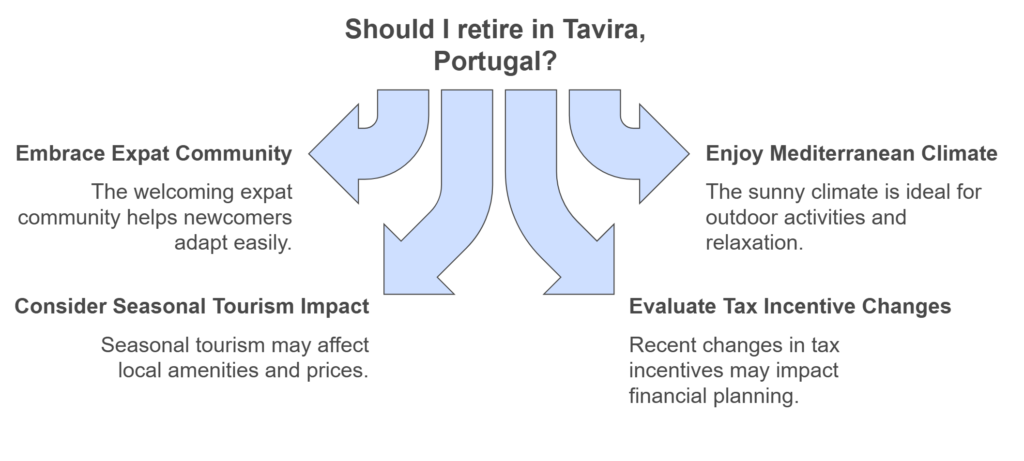
Oh, and Portugal has also been getting a bit more strict lately regarding tax incentives for foreigners—but this is a matter for another article, so if you want me to write an article on this subject, let me know in the comment section.
Now we are arriving at the letter V, meaning that soon we will go to the end of the list and discover the 2 cities that are out of the alphabetic order due to their immense peculiarity, so keep watching!
With the letter V, the next town among the best small cities to retire in Europe is
Viterbo, in Italy
Viterbo is a city in central Italy with about 67,000 residents, and is often referred to as the “City of Popes” because it served as a papal residence during the 13th century.
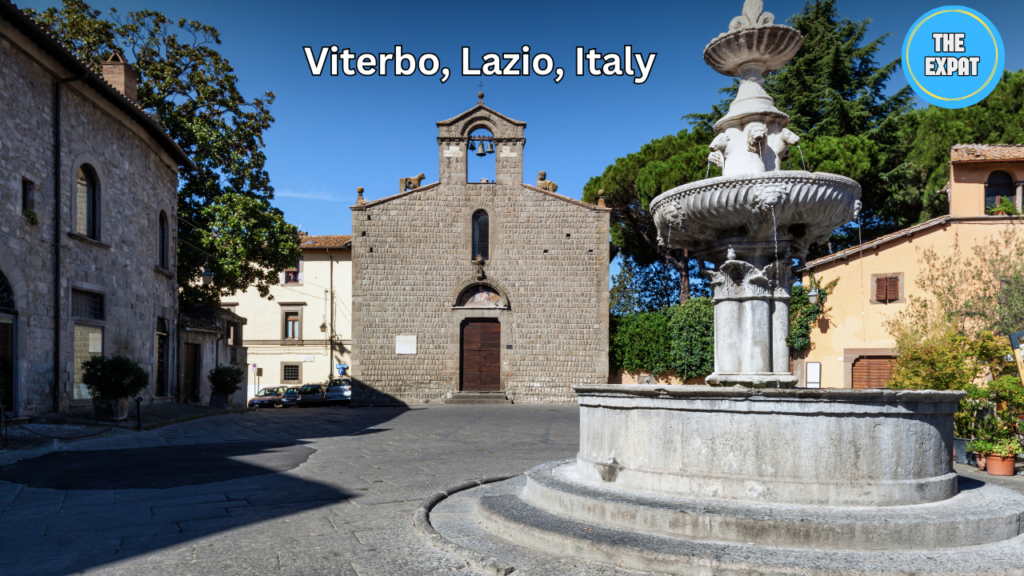
Situated about 80 kilometers north of Rome and less than an hour from the Mediterranean coast, Viterbo is conveniently located for those who prefer to live in a smaller city, but not far from big urban centers.
The compact size of Viterbo makes it easy to navigate on foot, fostering a sense of community and encouraging an active lifestyle
Summers are mild, around 23°C (73°F), winters are cooler, averaging 5°C (41°F), and the city’s historic cobblestone streets may be challenging for those with mobility issues.
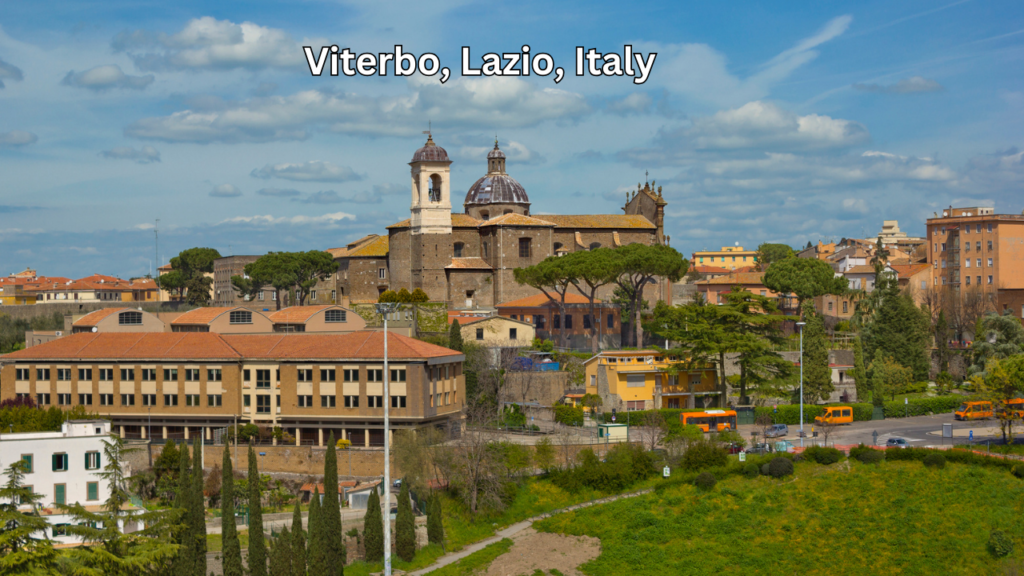
The average cost of living in Viterbo is approximately €1,287 per month, which is competitive compared to other Italian cities, and a one-bedroom apartment in the city center costs around €550, which is remarkably good, considering that Viterbo is located in the province of Lazio, one of the 5 most expensive in Italy.
The next in our list of the best small European cities to retire is…
Xàbia (Jávea), in Spain
Xàbia is another town in the Costa Blanca of Spain, and has around 28,000 residents. It offers a blend of natural beauty and relaxed living, and has a mild Mediterranean climate with over 300 days of sunshine per year.
The town is surrounded by breathtaking landscapes, and has several beautiful beaches such as La Granadella and Arenal, perfect for swimming and sunbathing.
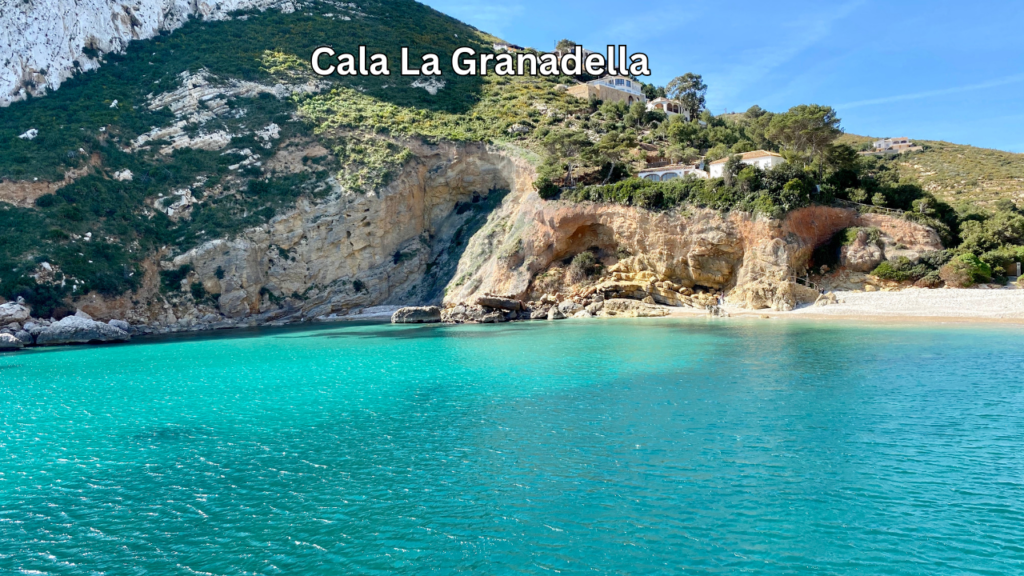
This nearby Montgó Natural Park offers hiking trails with panoramic views and diverse flora and fauna.
Some people may find Xabia too tranquil if they prefer a more vibrant urban environment, but if you want a laidback, relaxed town – this might be a good choice. However, during peak tourist seasons, the town can become crowded – not as crowded as Benidorm, but still might cause some queues at the local market.
Rental prices in Xàbia are affordable, especially during the off-peak season. You can find an apartment with a sea view for less than 700 euros.
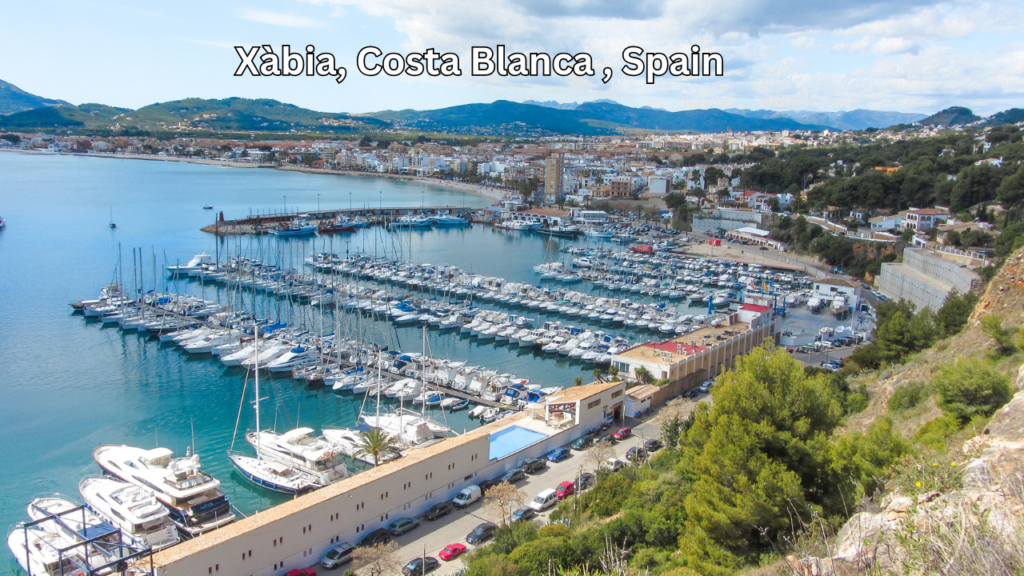
The next place is one of the two cities that I decide to put out of the alphabetic order due to its immense peculiarity.
I am talking about…
Rethymno, on the island of Crete, Greece.
Rethymno is a delightful coastal city on the island of Crete with approximately 35,000 residents. It has a Mediterranean climate with hot summers and mild winters, allowing for year-round outdoor activities and a generally active lifestyle.
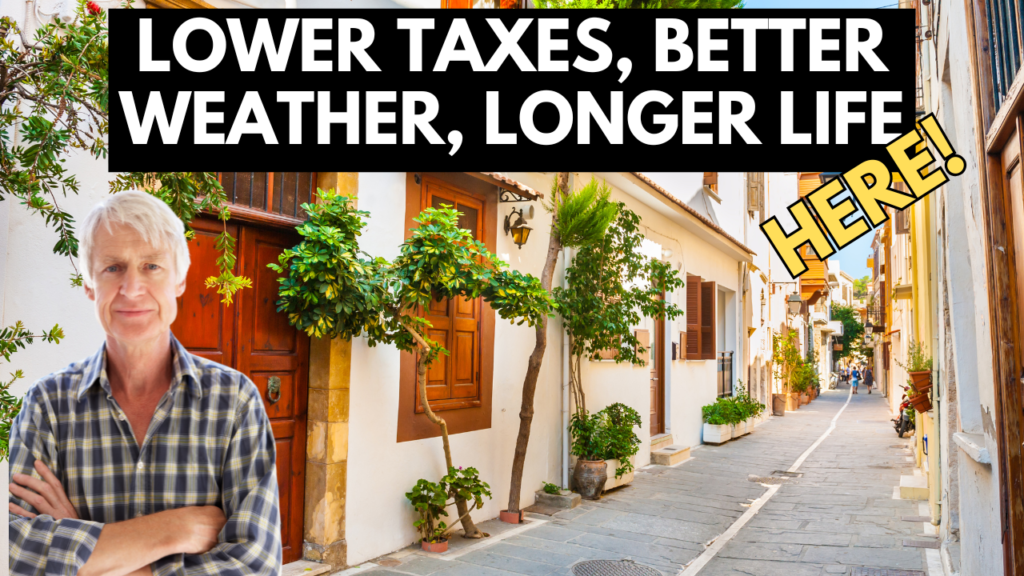
Together with the splendid Greek cuisine (the best in the world in my opinion!), this climate probably explains why Cretans live healthy and long lives – they are among the longevity champions in the world.
A key landmark in Rethymno is the Venetian Fortezza, a fortress overlooking the harbor. This historic structure showcases the city’s blend of Venetian and Cretan influences, appealing to those interested in cultural and architectural sites.
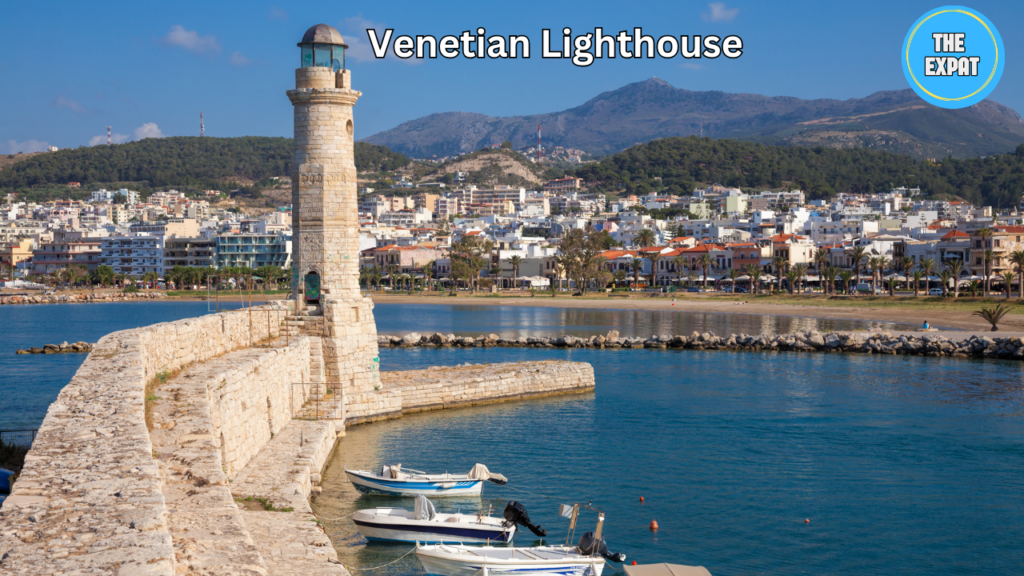
Talking about infrastructure, transportation there is straightforward, with a dependable bus network to larger Cretan cities like Chania and Heraklion, and also ferry connections to other Greek islands and the mainland.
The city has a university, so due to the presence of a large number of students, it is quite lively even during the off-season.
The cost of living in Rethymno is relatively low compared to other European cities. Housing, groceries, and dining out are affordable, enabling retirees to maintain or even enhance their standard of living.
During the peak tourist season, prices may rise, and windy days along the coast can sometimes disrupt outdoor activities. However, the climate remains pleasant year-round, with summer temperatures around 27°C (81°F) and winters averaging 12°C (54°F).
However, two characteristics of Rethymno make it a very attractive place to retire in Europe.
The first is the LOWER taxes for expats in Greece!
Retirees who become tax residents in Greece can enjoy a flat income tax rate of only 7% on foreign-sourced income, including pensions, dividends, and rental income. This rate applies for up to 15 years
This is one of the lowest income tax rates possible for expats retiring in Europe – in many European countries, the income tax rates over foreign pensions are well above 20%!
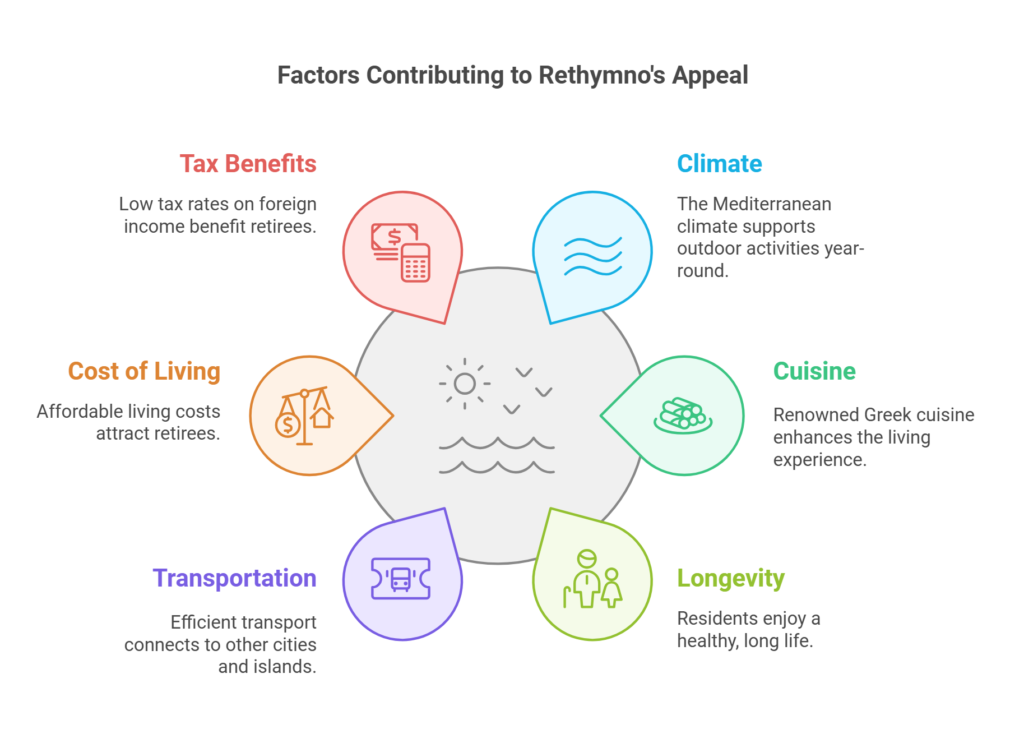
The second incredibly good aspect of this place is that the cost of living in the areas immediately surrounding Rethymno is much lower than in the city itself – while still having easy access to all the city amenities.
This happens because the presence of students inflates the housing prices in Rethymno, so a bit farther from the city (and from the university), prices are much lower.
In nearby Georgioupoli, just 25 minutes from Rethymno, you can find a 1-bedroom apartment to rent for just 350 euros per month – less than 370 dollars. In many American cities, this is the price to rent a parking space, not an apartment!
If the low prices of Rethymno impressed you, wait until the last city on our list, which starts with an S.
Sciacca, in Sicily, Italy
This is a charming coastal town with less than 40,000 residents, located on the southern coast of Sicily in Italy, known for its stunning natural beauty and very low costs.
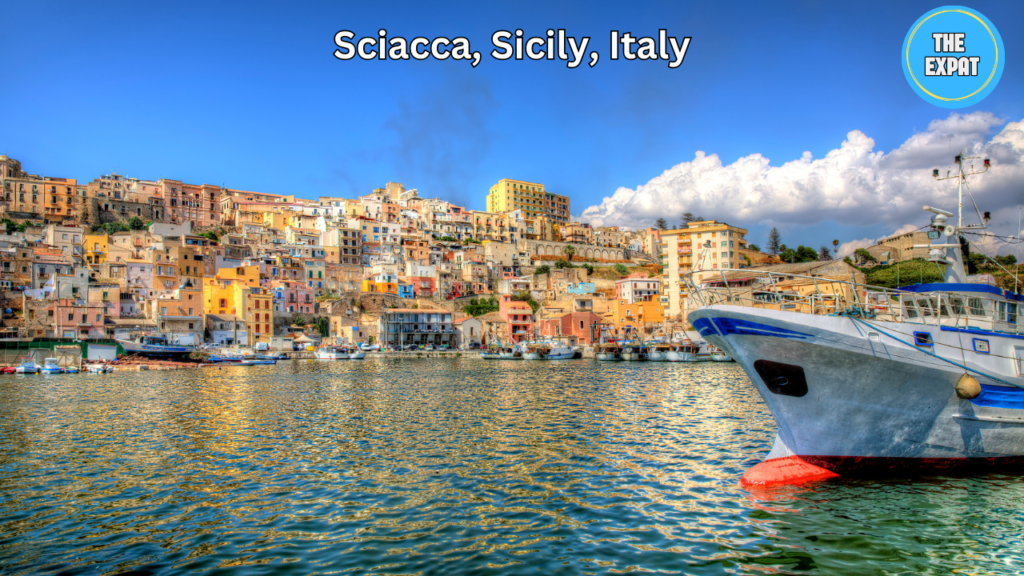
There, you can buy a spacious 5-room apartment with a sea view for just 70,000 euros!
Honestly, I don’t know any other place in Western Europe with such low costs like this specific part of Italy called the province of Agrigento.
That is why, together with a local resident, I decided to do an entire article about the Agrigento province!
Levi Borba is the founder of expatriateconsultancy.com, creator of the channel The Expat, and best-selling author. You can find him on X here. Some of the links above might be affiliated links, meaning the author earns a small commission if you make a purchase.
